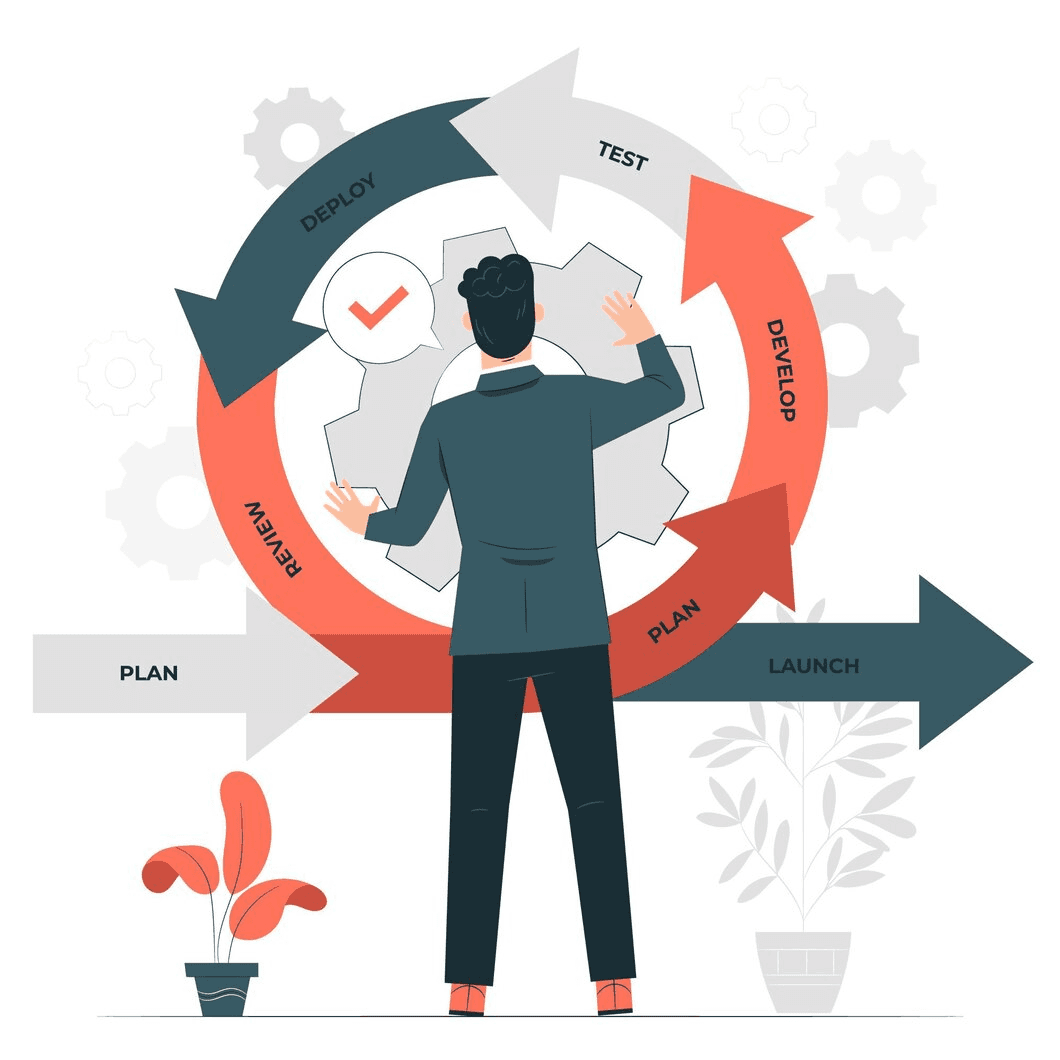Freelancers encounter the difficulty of adapting to evolving project goals, particularly when client expectations shift unexpectedly during a project. This fluid nature of goals can lead to misalignment and frustration if not managed properly.
Effective project management emerges as a critical solution, providing the necessary framework to maintain alignment with these changing priorities while ensuring the project remains on track.
By implementing clear systems, freelancers can strategically adjust timelines, allocate resources, and redefine deliverables, ultimately creating a more responsive and successful project environment.
From Ambiguity to Clarity: Setting Concrete Goals at the Start
The first stage of the project lifecycle is often filled with uncertainty. Freelancers frequently receive vague briefs from clients unsure of their exact needs. In these moments, project management ensures that freelancers focus on driving clarity.
It offers a structured discovery phase where freelancers extract detailed, actionable goals from the client. This initial clarification transforms abstract ideas into a solid foundation upon which the rest of the project is built. This process involves not just interpreting what clients express but refining their ideas into measurable, time-bound objectives.
For example, when a freelance graphic designer receives a brief to “improve brand identity,” project management techniques will break this down into concrete steps: updating the logo, creating cohesive color palettes, or developing brand guidelines.
Without such granular goals, the project risks deviating from the client’s original intent, leading to dissatisfaction and misaligned expectations.
Adapting Mid-Project: Navigating Goal Shifts with Precision
As the project progresses, clients often refine or shift their goals based on market feedback or internal decisions. Project management allows freelancers to adjust without losing momentum.
When a project reaches this critical midpoint, where goals shift unexpectedly, it’s easy for the process to unravel. However, structured systems help maintain stability even amidst change. Freelancers should prepare for this inevitability. UI/UX designers, for example, might need to overhaul an entire design flow if user testing reveals flaws in usability.
A well-executed project management strategy creates checkpoints that allow for controlled changes in scope and direction without derailing the timeline. These adaptive strategies help freelancers shift their focus and resources accordingly, without compromising the overall vision of the project.
Also read: How to Define and Manage Project Goals and Objectives
Prioritization Amid Competing Objectives
Once project goals start to evolve, prioritization becomes essential. Not every new client request should result in immediate action. Project management tools and methodologies provide a framework for prioritizing these evolving goals based on urgency, business impact, and resource availability.
For freelancers working on multiple projects simultaneously, this framework becomes even more critical.
Take SEO specialists, for instance. When handling multiple campaigns, prioritizing optimization efforts across different clients based on their business goals ensures deadlines are met without sacrificing quality. By systematically organizing tasks and aligning them with overarching objectives, project management helps freelancers prevent chaos as projects scale.
Also read: Techniques for Prioritizing Project Objectives
Communicating Goal Changes: Clear and Continuous Dialogue
Communication is the linchpin of goal management. Any shift in project direction must be articulated to all stakeholders involved. Without clear communication, goal changes can quickly spiral into misunderstandings. Project management systems foster this constant dialogue, ensuring clients and freelancers are in sync.
Documenting every change, its impact, and the agreed-upon deliverables is key. For example, freelance content writers working on long-term campaigns must maintain a record of goal adjustments—whether it’s modifying a blog post’s angle or rewriting content to align with a new product launch. These documented shifts provide transparency, ensuring that no effort goes unaccounted for and that all parties are aligned on the current project state.
Scope Creep: The Silent Threat to Success
Scope creep is a notorious challenge when dealing with evolving goals. Freelancers must be vigilant in recognizing when a client’s request strays beyond the agreed-upon objectives. Project management steps in here, creating boundaries while allowing flexibility.
The key to mitigating scope creep lies in setting clear expectations early on and revisiting them regularly as goals evolve.
Freelancers working in creative fields, like copywriting or design, often face the risk of clients pushing for additional work that wasn’t part of the initial agreement. Project management frameworks allow freelancers to identify when requests start to expand the project’s scope and initiate discussions with clients to renegotiate timelines or fees.
Creative Flexibility vs. Project Structure: Striking the Balance
Freelancers, particularly those in creative professions, walk a fine line between maintaining creative freedom and adhering to structured project goals. The iterative nature of creative work means project goals are likely to change as the creative process unfolds.
Project management bridges this gap by creating space for iterative revisions while ensuring that each iteration aligns with the overall objective. For freelance logo designers, this may involve presenting multiple design options to the client, each one refining the previous iteration based on feedback. While flexibility is vital, it must be contained within the project’s larger framework to avoid endless revisions and missed deadlines.
Managing Deadlines as Goals Evolve
With the evolution of project goals comes the inevitable challenge of managing deadlines. Freelancers must strike a balance between accommodating client requests and sticking to realistic timelines. Project management plays a crucial role in this, providing tools to adjust timelines as goals shift while keeping clients informed.
For instance, freelance ads specialists working on campaigns that require quick adjustments due to performance metrics must maintain a clear, real-time understanding of how new tasks impact their deadlines.
When the project expands, deadlines must be recalibrated. Without a structured approach, freelancers risk missed deadlines, which damages client relationships and their professional reputation.
Evaluating the Outcome: Reflecting on Evolved Goals
At the close of any project, freelancers must evaluate how well they met the evolving goals. This retrospective process offers key insights for future engagements. Project management systems facilitate structured post-project evaluations, allowing freelancers to reflect on what worked and what didn’t. This process not only highlights successes but also identifies areas for improvement.
For example, SEO specialists can review whether they hit the traffic goals agreed upon at various stages of the project, understanding where adjustments were successful and where they might refine their approach for future campaigns.
Content writers can evaluate how well the final deliverables meet the client’s shifting branding needs. These evaluations provide valuable lessons for handling evolving goals in future projects.
Also read: The Psychological Aspects of Goal Setting in Project Management
Conclusion
Evolving project goals are a natural part of the freelancer-client dynamic. Project management provides the structure necessary to navigate these shifts efficiently, ensuring freelancers remain adaptable without losing sight of the larger objectives.
From setting initial concrete goals to adjusting mid-project and managing competing priorities, project management transforms chaos into clarity, allowing freelancers to thrive amidst changing client demands.
With Pinrom, available for just $1/user, freelancers can access the structured project management solutions they need to ensure smooth transitions as project goals evolve.









